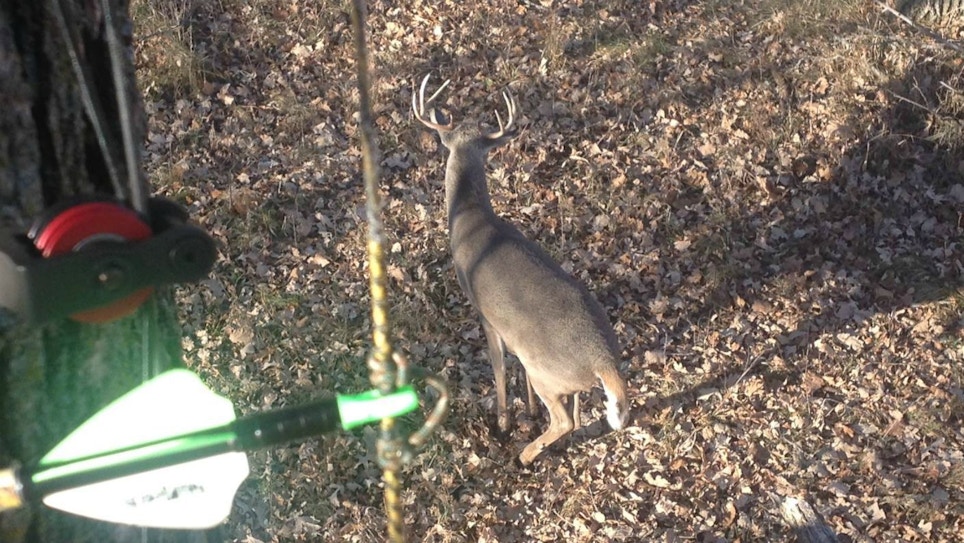Calling whitetails can be an important skill for deer hunters, especially bowhunters who need to lure deer into close range before shooting. Many hunters carry a grunt call into the woods, and there can be no argument as to its value. Sure, the sound of a grunt won’t bring every cruising buck into bow range, but it works often enough that smart hunters won’t leave home without a grunt call in a pocket or daypack.
I own a handful of grunt calls; they all sound a bit different, and at one time or another each one has worked on a whitetail. Even though a grunt call is an important part of my calling repertoire, if I could pick only one sound to mimic from my deer stand, it would be the snort/wheeze. Several companies produce snort/wheeze calls, but I’ve never tried one. I simply make the sound with my voice.
Yes, the snort/wheeze is a challenge call; rutting bucks will make it before fighting over a hot doe. Because the sound is basically saying, “You want a piece of me?”, it’s understandable that some bucks will walk (or run) away after hearing it. For that reason, I give a snort/wheeze call only when the chance of a buck walking within shooting range on his own is unlikely.
The most common scenario where I make a snort/wheeze call is during the pre-rut, rut or post-rut, when a buck is cruising in the distance (say 100 to 150 yards) and he’s not heading my direction. In this situation, you can’t blow on a grunt call loud enough for it to be heard by a walking buck, and if you could, it wouldn’t sound natural. A snort/wheeze sound, however, works perfectly in this situation. The sound is loud, and bucks will have no problem hearing it in the distance. I’ve also had good luck using it in high winds and near flowing/noisy creeks.

Generally, the first snort/wheeze sequence will stop a buck in his tracks and he’ll look your direction. Wait a few seconds, then give him another snort/wheeze sequence. If he starts walking (or running!) toward you, grab your bow or gun and get ready. If he remains in place and appears undecided, wait another few seconds and then give him another snort/wheeze sequence.
One attribute I like about the snort/wheeze is you can’t really make the sound too many times. I’ve heard bucks make snort/wheeze sounds around a buck decoy, or around another real buck, and they’ll make the sound over and over and over again. I once had a 110-class 4x4 make the snort/wheeze call at least 25 times in a few minutes as he circled my buck decoy.
If I stop a buck with the sound, but then he begins walking away, I hit him with another snort/wheeze, only this time louder and with more passion. If he stops and looks, I wait for him to make the next move. If he begins to walk away, then I hit him with the sound again.
Obviously, making a snort/wheeze isn’t going to bring every buck running to the base of your treestand. For me, however, it works well enough that it’s a rare dark-to-dark day in the treestand or ground blind when I’m not engaging a rutting buck with the snort/wheeze.
Practice the snort/wheeze sound with your voice or a manufactured call leading up to the rut so you’re ready to use it when the time is right. Be loud, be confident — and be ready to shoot!
Check out the video below where a hunter captured a buck making the snort/wheeze vocalization on his trail cam. Fast-forward to the 56-second mark to hear the distinctive sound.






